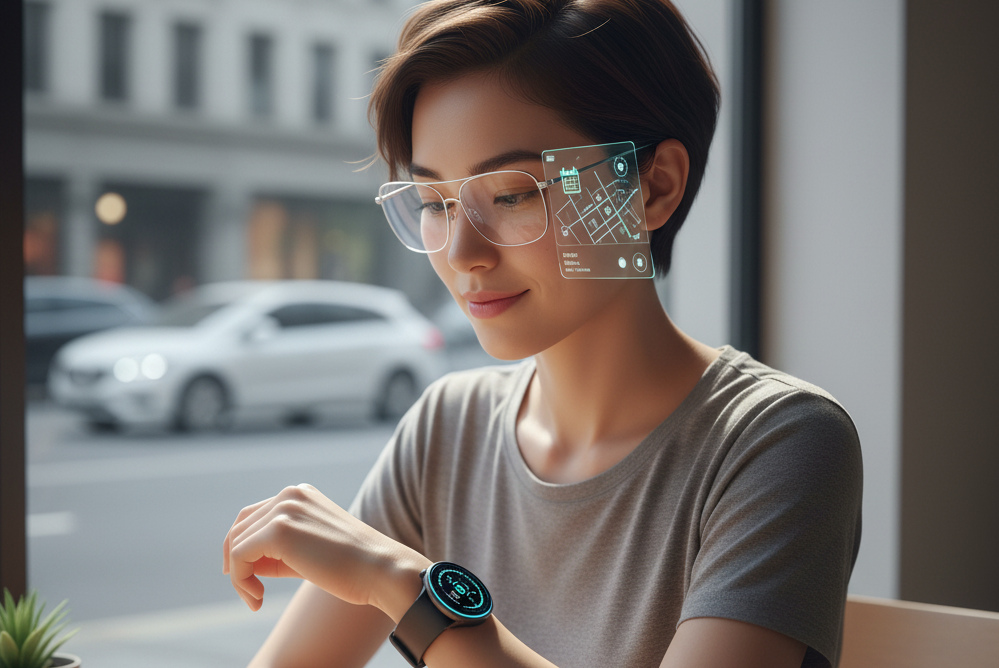The Coolest Wearable Tech to Expect in 2026
Owen Clarke
2025-09-14
6 min read

As we stand on the brink of 2026, the wearable technology landscape is poised for revolutionary changes that will fundamentally transform how we interact with digital devices and monitor our health. The convergence of advanced sensors, artificial intelligence, and miniaturized computing power is creating opportunities for wearables that were pure science fiction just a few years ago. These emerging technologies promise to make our devices more intuitive, our health monitoring more comprehensive, and our daily interactions more seamless than ever before.
The Evolution of Smart Contact Lenses
Perhaps the most groundbreaking development in wearable tech for 2026 is the advancement of smart contact lenses. Companies like Mojo Vision and Google have been developing contact lenses embedded with micro-displays and sensors that can overlay digital information directly onto your field of vision. These devices represent the ultimate evolution of augmented reality, eliminating the need for bulky headsets or glasses. The latest prototypes feature incredibly thin displays that can show notifications, navigation directions, and health metrics without obstructing natural vision. More impressively, these lenses incorporate glucose monitoring capabilities for diabetics, potentially replacing the need for painful finger-prick tests. The integration of eye-tracking technology allows users to navigate interfaces simply by looking at different elements, creating an entirely hands-free computing experience.
Next-Generation Health Monitoring Wearables
The health monitoring capabilities of wearables are expanding far beyond basic heart rate and step counting. Advanced biosensors expected to debut in 2026 will enable continuous monitoring of blood glucose levels, hydration status, and even stress hormones through skin conductance analysis. These developments represent a significant leap toward preventive healthcare, allowing users to identify potential health issues before they become serious problems. Wearable patches equipped with multiple sensors will be able to track vital signs continuously while being virtually invisible under clothing. These patches can monitor everything from blood pressure and oxygen saturation to muscle tension and sleep quality. The data collected by these devices will be processed by sophisticated AI algorithms that can identify patterns and provide personalized health recommendations based on individual biometrics and lifestyle factors.
Smart Clothing and Fabric Integration
The integration of technology directly into clothing represents another exciting frontier for 2026. Smart fabrics embedded with conductive fibers and flexible electronics will create garments that can monitor posture, muscle activity, and body temperature without requiring separate devices. This technology is particularly promising for athletes and fitness enthusiasts who want comprehensive performance monitoring without the bulk of traditional wearables. Companies are developing shirts that can detect early signs of cardiac irregularities, pants that monitor gait and balance for elderly users, and even socks that can alert wearers to potential foot problems. These garments maintain the comfort and appearance of regular clothing while providing sophisticated health and performance monitoring capabilities.

Revolutionary AR and VR Headsets
While augmented reality glasses have struggled with adoption in previous years due to their bulky design and limited functionality, 2026 promises to deliver truly lightweight and powerful AR devices. The latest generation of smart glasses will feature prescription lens compatibility, all-day battery life, and displays bright enough to be clearly visible in direct sunlight. These devices will serve as personal assistants that can provide real-time translation of foreign languages, identify objects and people in your environment, and overlay navigation information onto the real world. The integration of advanced AI will enable these glasses to understand context and provide relevant information without explicit requests from the user.
Brain-Computer Interface Wearables
Perhaps the most futuristic development coming in 2026 is the emergence of consumer-grade brain-computer interface wearables. These devices use non-invasive sensors to detect neural activity and translate it into digital commands. While still in early stages, these interfaces will allow users to control devices through thought alone, opening up possibilities for hands-free operation of smartphones, computers, and smart home systems. The initial applications focus on simple commands like playing music, sending pre-written messages, or adjusting device settings. However, the potential for more sophisticated interactions continues to grow as the technology develops.
Enhanced Fitness and Performance Tracking
Fitness wearables in 2026 will go beyond basic activity tracking to provide comprehensive analysis of movement patterns, technique optimization, and injury prevention. Advanced motion sensors and AI analysis will enable devices to provide real-time coaching for various sports and activities, helping users improve their form and performance while reducing the risk of injury. These devices will incorporate advanced materials that make them more comfortable for extended wear during intense activities. Improved water resistance and durability will allow for use in extreme conditions, while enhanced battery technology will provide weeks of operation on a single charge.
Privacy and Security Considerations
As wearable devices become more sophisticated and collect increasingly sensitive health and personal data, privacy and security considerations become paramount. The wearables of 2026 will incorporate advanced encryption and local processing capabilities to protect user data while still providing personalized insights and recommendations. Edge computing integration will allow devices to process data locally rather than sending it to cloud servers, reducing privacy concerns while improving response times. Users will have greater control over what data is collected and how it's used, with transparent consent mechanisms built into device interfaces.
The wearable technology landscape of 2026 represents a convergence of multiple technological advances that will fundamentally change how we interact with digital information and monitor our health. From smart contact lenses that overlay information directly onto our vision to clothing that monitors our vital signs, these innovations promise to make technology more integrated into our daily lives while providing unprecedented insights into our health and performance. As these technologies mature and become more accessible, they will likely reshape not just the consumer electronics industry but also healthcare, fitness, and human-computer interaction in ways we're only beginning to understand.



